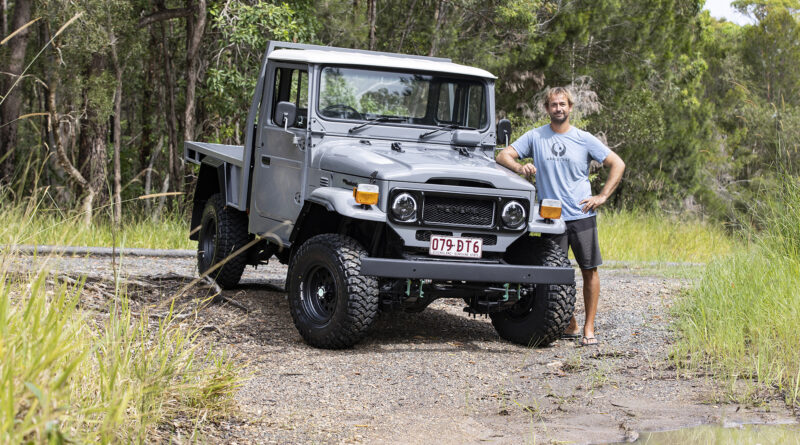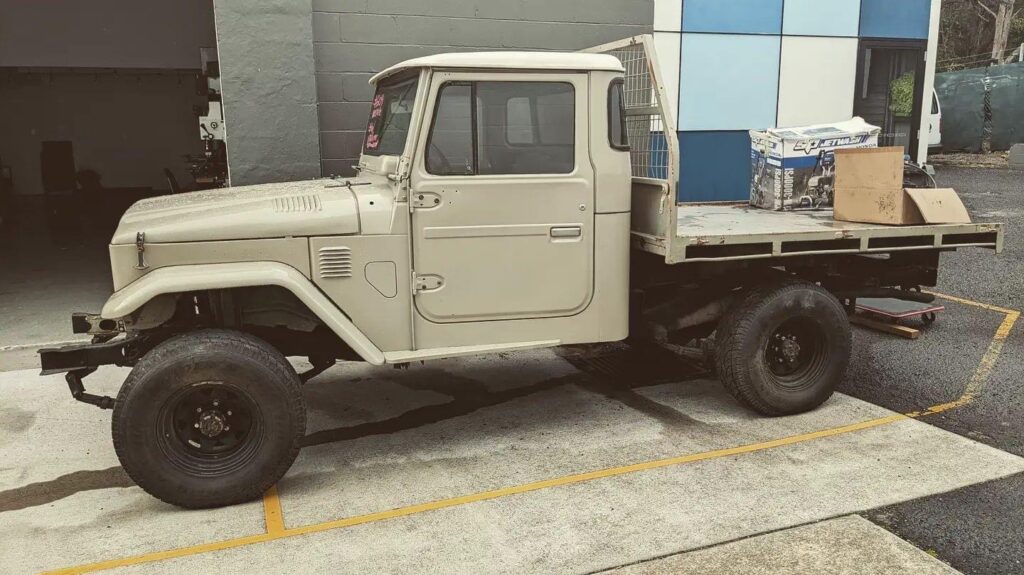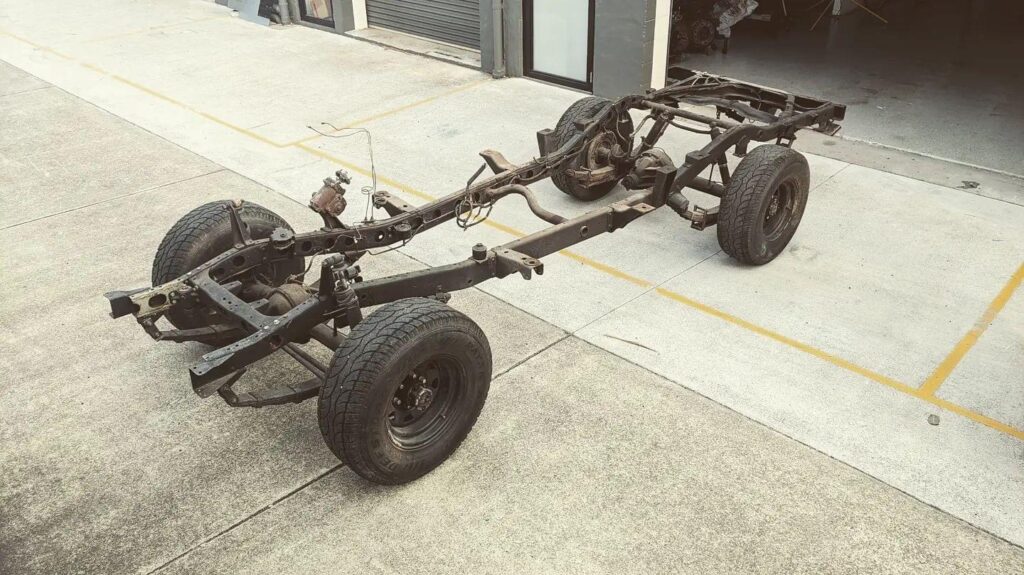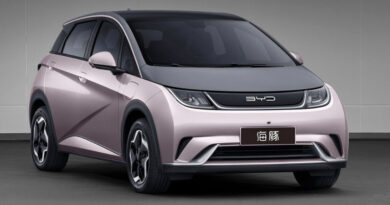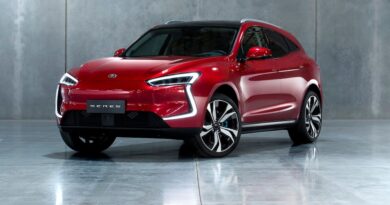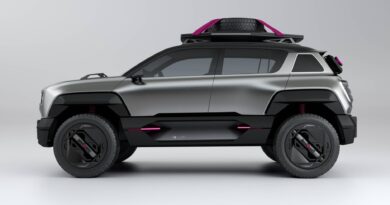Electromod 40-Series Toyota LandCruiser goes wild
The 40-Series Toyota LandCruiser is a legend of the outback and paddocks across this sunburnt country. But friendly to the environment? Not when there’s proper work to be done, mate.
This one is different. Rescued from a cane field in a sorry state, this 1979 LandCruiser HJ45 has been re-birthed with an electric motor and Tesla batteries to enjoy a zero emissions coastal cruising life.
Created by Ken Macken at Noosa’s Future Past EV workshop, the electric ’Cruiser follows his first electromod creation known as the Dasla; a lightweight single-cab 1981 Datsun 1200 ute with striking performance.
READ MORE: Converting classics to electric: how to do it and how much does it cost?
READ MORE: Planning a DIY electric car conversion? Read this first
READ MORE: Queensland school electromods a 1974 Land Rover Series III
This heavier HJ45 can’t match the little Datto’s zip, but on knobbly tyres, raised two-inches and retaining low-range 4×4 the Toyota is at home on the sand and off-road trails as it is cruising Noosa’s trendiest beach cafes.
Converting an Aussie icon
“It’s an icon truck globally,” Ken said. “I really wanted to show people that you can have one of these as an EV. Thanks to its gross vehicle mass (GVM) I knew I wouldn’t have to do too many upgrades and it would be compliable without much issue.”
These long-wheelbase HJ45s were 3.6-litre diesel engine versions of the 40-Series LandCruisers and had an original kerb weight of 1890kg.

Ken’s got his electromod version down under 1400kg, mainly by removing the 420kg (!) stainless steel tray and replacing it with an 85kg full aluminium version. With the diesel engine and its accoutrements removed, plus ditching a very heavy tow bar, the ’Cruiser has potential in reserve.
“It has a total GVM of 3035kg, so I could tow another one of these behind it,” Ken explained. “I reckon it’d do it, too.”
It’s powered by a NetGain HyPer 9HV dual shaft motor with AC-X144 controller, good for 90kW and 233Nm.
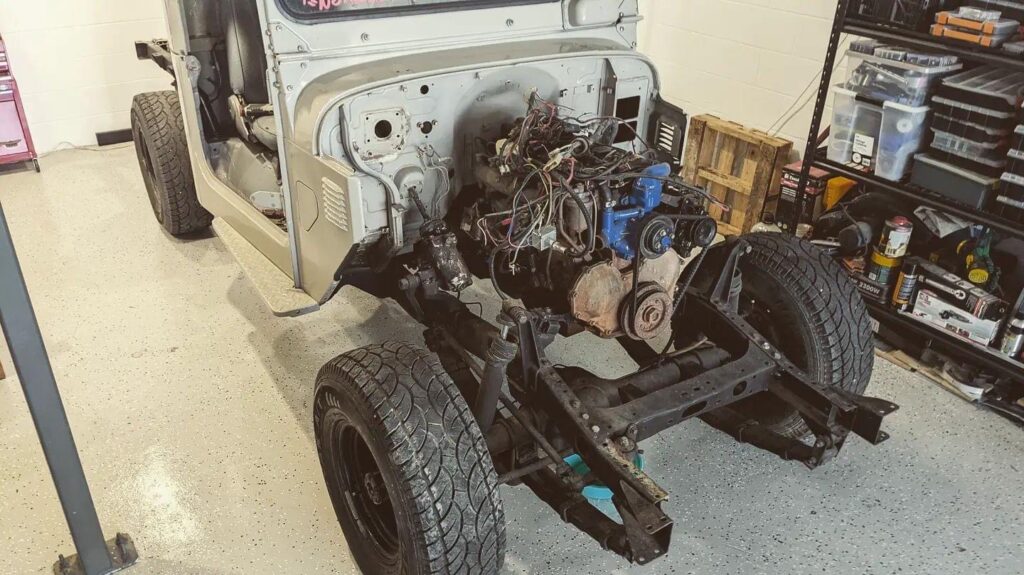
That old diesel six-cylinder was only good for 70kW and 216Nm, and Ken said its total weight – approximately 300kg – was around six times that of his new electric setup. The electric motor tips the scales at just 54.5kg. Progress, eh?
The motor and extras were sourced from Netgain’s importer, Traction EV, while Ken got hold of six 5.6kWh batteries from a Tesla’s deconstructed pack out of Europe.
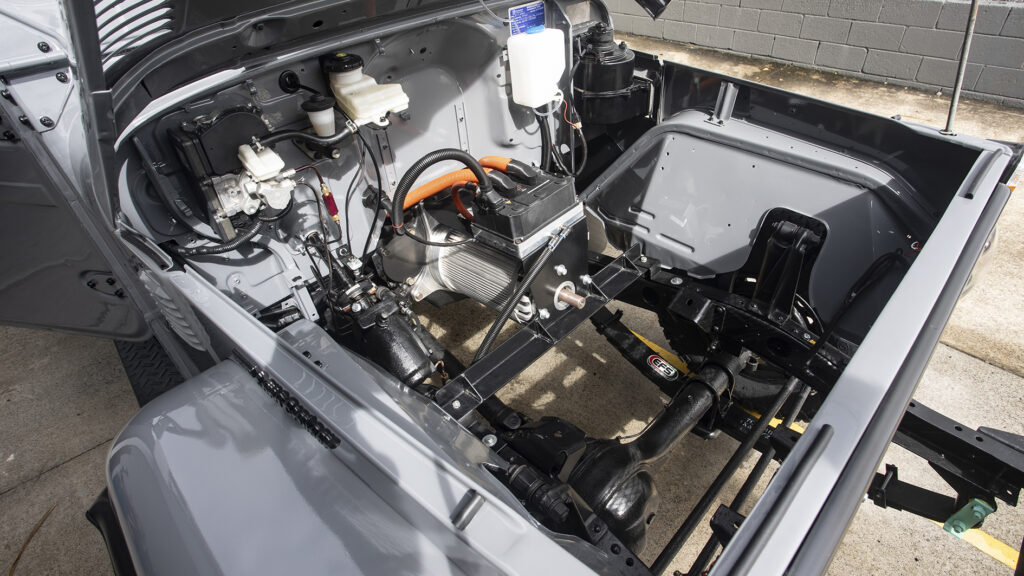
Hidden batteries
Batteries are mounted behind the single cab, under the tray and ahead of the rear axle. Ken designed a custom box to house them and set up a liquid cooled system to suit. The front tray mounts also needed modifying to accommodate the new power source.
“With my builds I try to keep batteries hidden,” Ken said. “A lot of people cover the trays with batteries in them, but I want to get full use of the tray. This’ll still be taking rubbish to the tip.”
It’s not a large system by any stretch, some 35kWh in total. “My cars are coast cruisers or for driving to school or the shops,” said Ken. “Range is about 140-150km on a good, eco driving day. Generally, it’ll be more like 110-120km.”
The quality of work looks impressive indeed, and to the frustration of those who are many months or even years into their own electromod project, Ken works fast. Very fast.
The LandCruiser’s gone from paddock basher to mod plated, compliant, electric-powered beauty in under three months. Ken said the work, start to finish, could have been completed in eight weeks if not for parts holdups and the Christmas break.

He bought the sand coloured HJ45 from Ingham, Far North Queensland where it had seen cane field duties. Prior to that it had lived inland so had largely escaped the dreaded tin worm.
“It had been repainted not very well with a fence spray gun; it was half in pieces and the other half didn’t exist, and a lot came in boxes,” Ken said. “It was rough and had a bit of rust, but not too much. I stripped it back to its chassis; every bolt was taken out of the thing. The chassis was then chemically etched, rust treated and epoxy coated.”
In with the electrics
Using his reference design for the high voltage work, Ken said this side only took him about a day. The low voltage stuff was another matter. He re-wired the whole vehicle, taking about a week to do so.
He fitted an Orion BMS 2 (battery management system) as the car’s brain, dealing with charging, discharging and safety. He sourced a battery charger and DC/DC converter from Stealth in the US, a 3.3kW charger with full CAN BUS communication. “It talks to the BMS itself; it’s safe and it works,” said Ken.
It’s set up for 15 amp charging and Ken said it’ll fill the batteries easily in half a night, while it’s also fitted with a Type 2 plug so can be charged at public charge stations, although limited by the 3.3kW of the charger.
The ’Cruiser remains leaf sprung front and rear but with a two-inch lift – the maximum allowed in Queensland.

All-terrain 31×10.50R15LT rubber surrounds 15-inch wheels; old-school Chevrolet slotted rims given a robust-looking ute tray coating finish. Locking hubs on the fronts have to be manually turned, as per original.
Ken rebuilt the axles, using an HJ47 front axle diff setup to ensure disc brakes could go on the front two wheels. Drums remain on the rears.
“The mud terrain tyres look more aggressive and are fun off-road, but are noisier on the road,” Ken said. More noticeable, of course, with next to no noise coming from the motor. Watching this thing drive in near silence – when you expect an agricultural diesel rattle – is quite the mind-scrambler.
A custom steering column’s gone in with Ken’s own electronic power steering setup. “It makes driving this beast a lot easier, but you do lose some driving feel,” he said.

Beautiful finish
Finishing touches include LED lights front and rear (yep, they’re all ADR compliant), plus LED parking lights and indicators. The body colour is Porsche’s striking Nardo grey.
Inside is the original steering wheel, manual gear shifter and shifter to go between low and high range 4×4.
Ken’s removed the original dash cluster and added four individual screens beneath the analogue speedo which show all the electronics’ information. A 13.3-inch touchscreen is central mounted for the audio and to run the OBD2 stuff too.

Having spied Rivian’s slide-out camp kitchen, Ken’s got a potential extra trick up his sleeve. With such a vast amount of space under the bonnet he’d contemplated creating a frunk, but is now flirting with fitting a slide-out BBQ or fridge for his kite surfing beach trips.
Flip down the grille and headlights and out comes a built-in. It’s the sort of fun idea that would work very well with this fascinating EV conversion.
The Future Past EV business is receiving plenty of requests for EV conversions so it’ll be interesting to see what Ken takes on next. A classic Porsche 356 or Mercedes 230 SL Pagoda have been suggested by potential customers – purists may shudder, but both would be fascinating to see electromodded.

This 40-Series LandCruiser is the current icon to receive the treatment, and will shortly be up for sale. If you want a turnkey EV conversion it’d be hard to beat as a coast cruiser with proper off-road ability.
And where else can you get a Toyota-badged BEV right now? Not from Toyota Australia, that’s for sure.
Visit www.futurepastev.com to discuss this electromod HJ45 or other potential builds.

